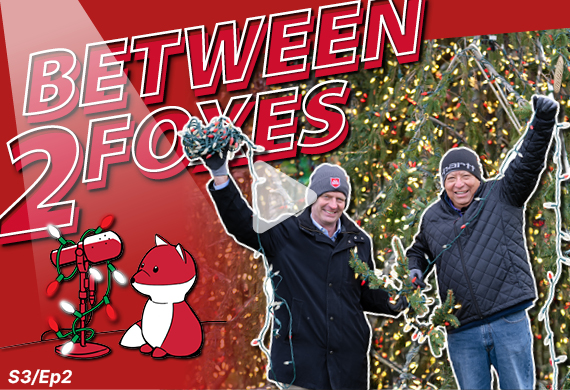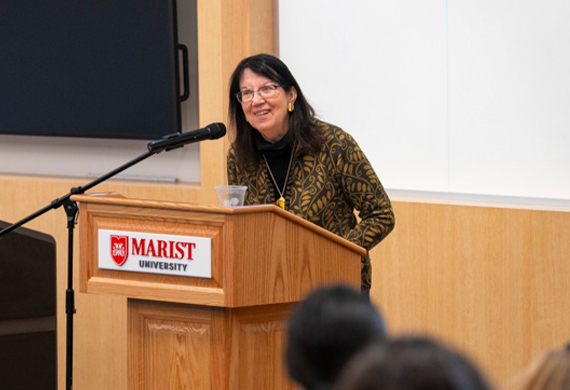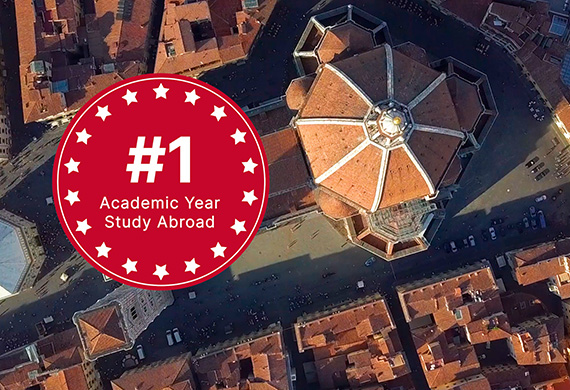Pushcart Prize-Winning Poet Brings Her Craft to Campus

Poet Joan Murray reads selections of her poetry to the Marist community in the Dyson Center. Photo by Carlo de Jesus/Marist University.
November 25, 2025 — Acclaimed poet Joan Murray visited campus for a Pushcart Prize reading hosted by Marist, engaging students and faculty with her award-winning poetry and insights into her creative process.
Murray is a two-time Pushcart Prize winner and two-time National Endowment for the Arts Poetry Fellowship recipient. Her visit included a reading of her poetry in the Dyson Center, a guest lecture, and was capped off with a reception in Fontaine Hall.
The visit was part of Marist's three-year Pushcart Prize sponsorship, launched in November 2024, which brings distinguished authors to campus and celebrates the University’s vibrant academic and creative community.
During her reading, Murray shared ten poems spanning her career, from the powerful "Her Head," inspired by a photograph of an African woman carrying water during a drought, to "What Makes Us Happy," a meditation on her neighbors and their dogs.
Joan Murray speaks to the Marist community in the Dyson Center. Photo by Carlo de Jesus/Marist University.
“The poems Joan Murray read were wonderfully rich, profound, and evocative while also being clear and manageable for a general audience hearing them for the first time,” said Dr. Joshua Kotzin, Associate Professor of English and Jewish Studies Coordinator, who coordinated the visit. “She did a wonderful job making the most of the reading as a live, in-person event, where students had the opportunity to see and hear a major writer up close.”
Students Find Personal Connection
Una Soliday '27, a double major in English and Philosophy, said Murray’s experience reflected her own. Both of them started their academic journey as visual art students before switching to pursue English.
"Looking at Murray at the front of the class was like looking at myself," said Una. "The way she moved about the space, pressing to her tiptoes to emphasize certain points, using her arms and hands to dance to the sounds of her words."
Una, along with Ashley Laub '27 and Angelina Ruiz '27, are students in Professor Jeffrey Canino’s Visual Storytelling and Graphic Narratives workshop, in which Murray gave a guest lecture, giving the class an opportunity to engage with her more deeply.
"I was struck by the warm and insightful responses Murray offered to my students' questions about inspiration and process," said Canino. "As a creative writer working in multiple genres, she mirrored their own varied ambitions and had a wealth of experience to share."
Joan Murray speaks in Professor Jeffrey Canino's class. Photo by Carlo de Jesus/Marist University.
The students noted Murray's poetry for its vivid imagery, musical rhythms, and an ability to find the extraordinary in everyday moments.
"Reading her work reminded me why I enjoy poetry," said Ashley, a digital media major with minors in studio art and social justice. "Her storytelling voice and imagery just flow through her language, which makes her poetry extremely accessible and emotional."
“Usually, with poetry, I find it to be confusing and do not find a way to connect with it,” said Angelina, who also majors in digital media and minors in creative writing. ”In Joan Murray's work, she found a way to perfectly combine personal experiences and her imagination in a way that stuck with me.“
Murray has published multiple books, including Swimming for the Ark: New & Selected Poems 1990-2015, Looking for the Parade, Queen of the Mist, and The Same Water. Her work has appeared in The New Yorker, The Atlantic, Harper's, The Paris Review, and Poetry, among other prestigious publications.
Finding a Voice in Poetry
During the Q&A session following her reading, Murray spoke candidly about her journey to poetry.
"I was that kid who was creative," she said. "I was going to be the visual artist."
But after taking literature classes in college, she said, "I just fell in love with this stuff. And all those dead old guy writers, I just loved them. I wanted to spend my life with them."
Una was struck by Murray's response to her question about how to begin writing.
"Murray said she has to have just one line, one musical line: she must hear the melody first, and the rest of the poem will sing itself alive," she said. "Watching her answer my question, her eyes closed tightly, her body moving as if she were hearing the song right then and there—it was a type of magic, and I was able to understand what she was talking about."
The students said it was an important part of their educational journey to listen to a visiting writer like Murray on campus.
"Getting a perspective like Joan's is crucial, because it is very rare that you hear of someone pursuing a career in poetry," said Ashley. "Being able to hear about it from a serious perspective encourages me to pursue art, and recognize that despite what some may say, you can make it pursuing a career in the arts."
Joan Murray speaks with Marist faculty at reception in Fontaine Hall. Photo by Emily Portnov '29/Marist University.
“It’s a unique type of experience—hearing a writer read their work in person—and I think students benefit immeasurably having it as part of their Marist education,” said Dr. Kotzin.
Murray's visit is the second in a series of events made possible by Marist's sponsorship of the Pushcart Prize, which was announced in November 2024. The collaboration will continue to bring distinguished authors to campus, enriching the literary community and providing students with invaluable opportunities to engage with accomplished writers.
"I would like you to say to yourself, ‘This is a big tent, I can find my way into it,’" Murray told the students. "I just would love it to move people, to connect with their own lives, to feel welcome, like I'm a part of you, you're a part of me — this is something we do together."



